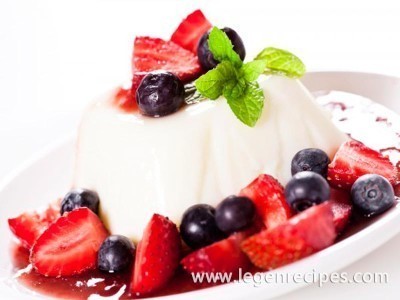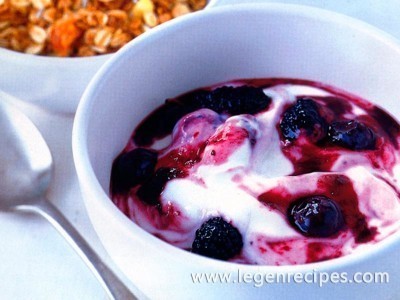Lamb meat is called a sheep or lamb to 1 year. For a particularly delicate taste of milk lambs slaughtered at the age of three months earlier.
Lamb and lamb, unlike beef and pork, are not prohibited by any religion – except for those that require adherents complete rejection of meat – vegetarian.
Lamb – a valuable food product. According to the content of protein, essential amino acids, vitamins and minerals, it is not inferior to beef and caloric even exceeds it. The lamb cholesterol is several times less than in beef and pork. This meat is a good source of zinc, which is important for the immune system, and normal cell division. Zinc helps to normalize blood sugar levels. 400 g lamb contain 38.3% of the daily value of zinc. Meat is rich in vitamin B12, which is involved in the formation of red blood cells and is necessary for the prevention of anemia.
In the case of lamb can be an individual intolerance of the product. First of all, lamb long enough to digest in the stomach, so it is contraindicated in people with delayed or poor digestion (though, as mentioned, the lamb meat is tender lamb). Do not get involved mutton for those who suffer from kidney disease or gall bladder, so it is easy cholagogue. It is not recommended to eat lamb joints in arthritis, gout, gastritis, stomach ulcers and hyperacidity. Lamb shall not completely replace other types of meat, since it contains a minimum amount of iodine, the lack of which can lead to development of diseases of the thyroid gland.
The types and grades
Lamb meat is different, first of all, age. Milk lamb – a lamb to three months. Then the lamb is separated from the uterus and are fed separately – respectively, milk lamb turns into a young herbivorous lamb. Lambs (lambs) in Russia called rams and sheep up to a year of age.
In the US lamb – lamb – believe the animal up to 14 months (and then turns into a lamb mutton). Moreover, Americans have more complex than in Russia, Differ lambs age: baby lamb (suckling) – 6-8-week dairy lambs; spring lamb – lambs, already excommunicated from the milk at the age of 3-5 months; regular lamb – lambs; yearling – 12-14-month lambs aged.
The distinguished French dairy lambs (30-40 days, 8-10 kg); Lambs 70-150 days of age and weighing 20-25 kg; and lambs aged 6-9 months, weighing 30-40 kg, have already started to pluck the grass – a taste of the meat is more pronounced, and many gourmet prefer it. Everything else for the French – lamb.
In dairy lambs and young sheep meat is very pale pink. As they get older the animal the color of his dark meat: an adult sheep two years it becomes purplish-red.
Dairy lambs are usually sold either as a whole (even unskinned) or cut into four parts. For older lamb carcass has been cutting its own system.
The main parts of carcasses of lamb – neck, shoulder, loin, brisket, back leg (ham). In addition, isolated kidney (lumbar) part Flap shank (shank, lower leg).
Neck – an inexpensive piece with rich flavor, sold in whole or chopped pieces (neck ring), and requires a long heat treatment (usually quenching). Neck and cervical-dorsal piece sometimes separated and sold as a whole. In this case, it is possible to clean the bones and get two pieces of cervical or breast, or – if you leave the fillets undivided – Double Neck Fillet. Neck fillets can be cooked or stew; Double Neck Fillet can be stuffed.
Shovel sold whole or divided into two parts: part of the backpack and shin. Meat of the blade more rigid than the rear legs, but still not very; It is suitable for grilling, baking, cooking and fire. Part of it is separated from the bones and use small pieces for stew and pilaf.
Loin is usually cut into chops for frying or grilling, or in a pan. You can bake it in its entirety. The back of the loin fillet is – tender meat – and loops, too gentle, quite lean cuts. Associated spine, this part can be chopped crosswise; these pieces are called “double fillet ‘chops or” butterfly “. All part of the whole (fillet and loop) forms a short saddle. The long seat is nerazrublennuyu back of the loin and renal part. Loin, like the loin can be divided into small (thin) chops cooking on the grill or in a frying pan and cook the whole piece of roast.
Breast – bold and inexpensive piece. Total brisket bones can bake or put out, but most of the meat is first separated from the bones. Breast bone (or not) can be cut into strips for fire or soups.
Leg – the most popular part of baking, as the back foot a lot of tender, lean meat and few bones. Sometimes the leg portion is separated into loin and shank (shank, the lower part); sirloin part can be cut into smaller pieces, often called ham steak and fry in a pan or on the grill. Long leg or hind quarters, called the piece, composed of renal back and legs properly.
Culinary applications have and offal – from the liver, stomach, kidney, lung and visceral fat to the testicles, which in many countries are considered a delicacy.
Lamb from 3 months to a year can be tryavyanogo and grain-fed, even though there will always be cheaper lamb nourish feed. Grain-fed meat marbling gives. Grass-fed, in many cases linked to the open pasture: lamb eats fresh herbs, which, of course, has a positive effect on the taste of meat.
There are local, very valuable varieties of lamb. In the old days in Russia particularly appreciated Khakasskaya lamb and mutton. In Europe, the famous Icelandic lamb enjoys a free grazing lambs ancient local breed slaughtered between the ages of 4-5 months.
In Europe, Asia and America are grown various breeds of sheep – meat, milk, wool and mixed types, both old and recently retired. Former Russian meat breed of sheep – Romanov – derived in the XVIII century. Meat breeds vary the volume of meat and sheep fat, as well as adaptability to specific climatic conditions.
How to cook
Meat can be roasted lamb, stew, bake, cook on the grill and boil. Recipes cooking very much: from traditional to exotic.
The best way to preserve the natural flavor of lamb – quickly fry it in a pan and bake on the grill. Taste lamb good complement sweet and sour sauce or tkemali. The meat is very tender lamb, so the marinade is best to take the milk, cream or yogurt with spices and salt. Delicate taste acquire meat, roasted with rosemary, garlic and lemon. Rich taste give lamb ginger and basil.
A simpler, but no less delicious turn meat, stewed in wine with vegetables. Lamb stew with prunes can or dried apricots. Emphasize the taste of meat pomegranate seeds.
The pieces of meat can be fried in batter or crumbs of batter; lamb can be a filling for pies.
It goes well with meat and vegetables: lamb served with asparagus, eggplant, tomatoes. In North Africa, couscous prepared with lamb.
Minced lamb cooked juicy burgers and meatballs.
Season
The different climatic zones have their own traditional seasonal lamb. In France, milk lambs (30-40 days) are sold in large quantities on the market in late winter and early spring in areas that specialize in the production of sheep cheese. Lambs that are slaughtered at the age of 70-150 days, is only available from Easter to June. The third category – lambs aged 6-9 months, especially prized by gourmets – they are sold from September to December.
Italian cooks find lamb is especially valuable in the first four months of the year – that is, from January to April. It was during this period of Rome’s restaurants offer dishes of lamb breast accompanied by the first vegetables – green beans, tiny zucchini, zucchini and lettuce.
Iceland is famous for herbal otkroma lambs. Icelandic lamb is clogged, basically, from September 1 to October 15 – at the age of 4-5 months.
In the Southern Hemisphere (Astral, New Zealand, Argentina, South Africa) season of “shifted” in comparison with Russian and European at the earliest possible time. So, milk lamb is available, mainly from January to March.
How to choose and store
Good lamb feels elastic, its meat is pale pink, and white fat. If fat has some yellowing and friability, this old sheep meat or sheep; similarly bright, scarlet-red meat – meat is lamb, which is about two years. In the mature and old sheep meat stringy. The thicker the meat, the animal is older; most gentle, dietary meat – from lamb milk.
When purchasing be sure to do a test to pit after pressing. Sniffed carefully, you can determine the degree of freshness – smell should be enjoyable, without the mustiness and putrefaction.
If you are going to buy milk lamb, it is useful to know that the lambs are usually born in Russia in January-March. Accordingly, the main season lamb breast – April and May (and March).To improve the taste and texture of meat slaughtered lamb carcass is usually kept in limbo for 2-3 days in a cool room at a temperature of 0-4 ° C and a relative humidity of about 90% and then cut up; carcasses of adult animals have to “mature” for much longer – up to 3 weeks. During this time, there is a softening of the muscle fibers, the meat becomes more tender and the taste of it is finally formed.
Defrosted lamb can be determined by a loss of elasticity, dimples on pressure might not be aligned, and the surface becomes a bright red color. Secondary frozen mutton considerably loses its taste and nutritional quality.
Chilled lamb stored in the refrigerator a day or two. If you want to store the meat for a longer period, it should be frozen in the freezer. Wrong razmorozav lamb, you can spoil its taste and texture; lamb can not be thawed in warm water and boiling water.




